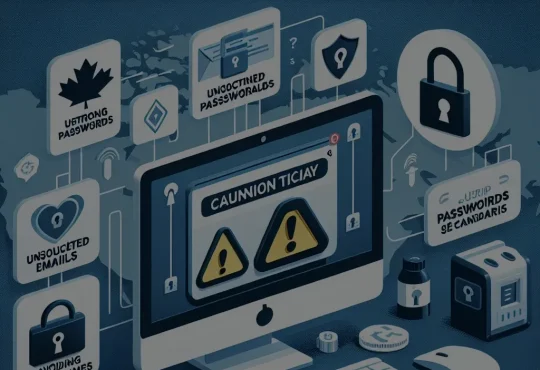
Cybercrime poses a significant threat in Canada, affecting individuals, businesses, and government institutions alike. As technology continues to evolve, so do the methods employed by cybercriminals, making it imperative for citizens to understand the nature of these crimes and how to effectively report them. This article offers a comprehensive step-by-step guide for Canadians on how to recognize different types of cybercrime, gather evidence, and report incidents to the appropriate authorities.
Understanding Cybercrime: Types and Impact in Canada
Cybercrime encompasses a wide range of illegal activities conducted over the internet or involving computer systems. In Canada, the most common types include identity theft, phishing scams, ransomware attacks, and online harassment. Identity theft often involves the unauthorized use of someone’s personal information to commit fraud or other crimes. Phishing scams typically involve deceptive emails or websites that trick users into revealing sensitive information, while ransomware attacks encrypt a victim’s data, demanding payment for its release. Online harassment, including cyberbullying and stalking, can lead to severe emotional and psychological effects on victims.
The impact of cybercrime in Canada is profound and far-reaching. According to the Canadian Anti-Fraud Centre, billions of dollars are lost annually due to various cybercrimes. Victims often face financial loss, but the repercussions extend beyond monetary concerns. Individuals may experience stress, anxiety, and a sense of violation, leading to long-term emotional distress. Businesses can suffer significant reputational damage, loss of customer trust, and operational disruptions, which can ultimately lead to financial insolvency.
Additionally, cybercrime has societal implications, as it can undermine public confidence in digital services and the economy. When people fear becoming victims of cybercrime, they may hesitate to engage in online transactions, hindering the growth of e-commerce and digital services. The effectiveness of law enforcement can also be tested, as they work to keep pace with rapidly evolving cyber threats and technologies. This necessitates a proactive approach to cybersecurity education and awareness for both individuals and organizations.
In recognition of the escalating threat posed by cybercrime, the Canadian government has implemented various strategies to combat it. Initiatives such as the National Cyber Security Strategy aim to bolster the nation’s resilience against cyber threats. Public awareness campaigns also educate Canadians about the dangers of cybercrime and the importance of personal cybersecurity measures. Understanding these aspects of cybercrime is the first step in effectively reporting incidents and contributing to a safer digital environment.
How to Gather Evidence: Essential Steps for Reporting
Gathering evidence is a crucial step in reporting cybercrime and can significantly impact the investigation’s success. The first step is to document everything related to the incident. This includes taking screenshots of any suspicious communications, saving emails, and noting down the date and time of the occurrences. If applicable, record the URL of fraudulent websites or social media profiles, as these can serve as valuable evidence for investigators.
Next, ensure that you preserve the digital evidence securely. Avoid deleting any files or communications, as these may be critical for law enforcement agencies. If you suspect malware or viruses, refrain from using the affected device until a professional has assessed it. Instead, create backup copies of your data, if possible, and store them safely. This can help in recovering essential information should it be compromised during the cybercrime incident.
Another essential step is to identify and document any witnesses or individuals who may have been affected by the same crime. Gathering testimonies or statements from co-workers, friends, or family members can provide additional context and bolster your case when reporting. If the incident involves financial transactions, keep records of bank statements or invoices that relate to the fraudulent activity.
Lastly, consider consulting cybersecurity professionals for guidance on how to secure your systems and prevent future incidents. They can provide insights into the best practices for digital security, which may include updating software, using strong passwords, and enabling two-factor authentication. By being proactive and prepared, you can enhance the quality of the evidence you gather, which will not only assist law enforcement but also fortify your defenses against future cyber threats.
Reporting Cybercrime: Where and How to Submit Your Case
Once you have gathered and secured all relevant evidence, the next step is to report the cybercrime to the appropriate authorities. In Canada, the first point of contact for reporting most cybercrimes is the Canadian Anti-Fraud Centre (CAFC). The CAFC provides a centralized resource for victims and can offer guidance on the next steps. You can report incidents online through their website or by calling their toll-free number, ensuring that you provide all relevant details and evidence gathered.
If the cybercrime involves an immediate threat to life or property, contacting your local police department is essential. Most police services in Canada have dedicated cybercrime units or officers trained to handle such cases. When you approach law enforcement, present the evidence you have collected and provide a clear account of the events. This will assist the police in their investigation and allow them to take appropriate action.
For certain types of cybercrimes, such as those involving credit card fraud, it may also be advisable to report the incident to your financial institution. Many banks and credit card companies have protocols for dealing with fraud and can assist you in recovering lost funds. Furthermore, they may monitor your accounts for any unauthorized transactions or suspicious activity.
Lastly, consider reporting the crime to the Internet Crime Complaint Center (IC3) if the incident involves international elements or occurs across borders. The IC3 works in conjunction with various law enforcement agencies and can provide assistance in cases that extend beyond Canadian jurisdiction. By utilizing these resources effectively, you contribute not only to your case but also to a broader effort of combating cybercrime in Canada.
Reporting cybercrime is a crucial step in addressing and mitigating the impact of such offenses in Canada. By understanding the types of cybercrimes, gathering essential evidence, and knowing where to report these incidents, individuals can take an active role in protecting themselves and their communities. As the digital landscape continues to evolve, remaining vigilant and informed will empower Canadians to combat cybercrime more effectively, ensuring a safer environment for all.
Review of Top IPTV in CanadaUnderstanding Common Online Security Threats in CanadaAssessing the Safety of Personal Details Online in CanadaRelevant LinkRelevant LinkRelevant LinkReview of Top IPTV in CanadaUnderstanding Common Online Security Threats in CanadaAssessing the Safety of Personal Details Online in CanadaRelevant LinkRelevant LinkRelevant LinkReview of Top IPTV in CanadaUnderstanding Common Online Security Threats in CanadaAssessing the Safety of Personal Details Online in CanadaRelevant LinkRelevant LinkRelevant LinkReview of Top IPTV in CanadaUnderstanding Common Online Security Threats in CanadaAssessing the Safety of Personal Details Online in CanadaRelevant LinkRelevant LinkRelevant LinkReview of Top IPTV in CanadaUnderstanding Common Online Security Threats in CanadaAssessing the Safety of Personal Details Online in CanadaRelevant LinkRelevant LinkRelevant Link






